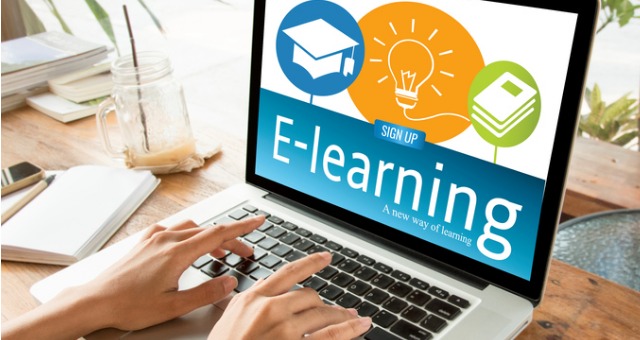According to data collected during the 2010 U.S. Census, the number of school age children (age 5 to 17) in the U.S. during 2016-17 was 58,212,462. 37% of those children live in California, Texas, New York, Florida and Illinois. In an effort to offer more course content without busting already stretched budgets and to adapt to the burgeoning “e-education” trend, public, charter and private schools all over the U.S. are incorporating “blended learning” into their curriculum. Here’s an easy definition of just what “blended learning” can mean to a school system plus a sampling of the ways that the three states with the highest number of U.S. school-age children approach digital education.
WHAT IS “BLENDED LEARNING?” – Blended learning is the term used to describe the combination of traditional teaching methods we’ve all become accustomed to with web-based and digital teaching tools. One of the reasons blended learning works within a brick-and-mortar classroom model is that students are given some control over the design of their learning path and are allowed the freedom to choose learning schedules and sometimes even the place they complete the online portion of their education. Overall, blended learning does require a schedule that includes a mix of open-scheduled online or digital learning time plus face-to-face classroom time with an instructor.
HERE’S A SAMPLING OF HOW THE 3 STATES WITH THE HIGHEST NUMBER OF SCHOOL AGE CHILDREN ARE ADAPTING
- CALIFORNIA – 12% (.1233 or 7,182,951) of all school-age children in the U.S. live in California. The State offers online public school courses at no cost from a list of state-approved schools. A school can qualify for the list if all offered coursework is available completely online; the school offers services to state residents; and the school is funded by the government. Virtual schools can be charter schools, state-wide public programs, or private programs that receive government funding. In addition, students can take courses offered by an online provider outside the local school district on a fee basis.
- TEXAS – Nearly 10% (.0934 or 5,441,159) of all U.S. school-age children live in Texas. The Texas Virtual School Network (TxVSN) works with the Texas Education Agency (https://tea.texas.gov/) to provide supplemental, graduation-targeted, online courses to public school age students. The TxVSN curriculum catalog lists courses designed to provide students with the opportunity to enroll in high school, advanced placement, and dual-credit courses offered through TxVSN by approved providers.
- NEW YORK – About 6% (.0567 or 3,303,567) of all U.S. school-age children live in New York state. In 2014, the New York State Department of Education (NYSED.gov) issued the Commissioner’s Regulations for Online Learning. The regulations state that any educational program* administered by a State agency that operates pursuant to New York Education Law “may provide its students with an opportunity to earn units of credit towards a Regents diploma through online and/or blended course study.” (*Includes public school districts, charter schools, and certain registered nonpublic schools.)
HOW BLENDED LEARNING EXTENDS THE TRADITIONAL CLASSROOM
A wide variety of digital and/or web-based materials can be used to introduce e-education and blended learning into a school curriculum, including:
- Online curriculum products,
- Video-recorded lectures,
- Webinars,
- Podcasts,
- Chat rooms,
- Email, and
- Social media
One of the more effective approaches can be the introduction of online curriculum products into the traditional classroom. Schools and educators are using e-based learning programs to facilitate blended learning, discuss homework, post assignments and interact with peers as they work on projects.
Since 2004, Global Student Network (GSN) has been a leader in providing a range of seven complete online learning programs to public, private and home schools. GSN offers over 2000 courses, products and services to assist in implementing robust, interactive and engaging blended learning curriculum in any school setting. For more information, visit GSN today.

